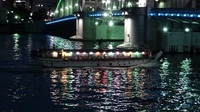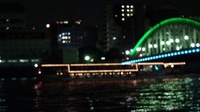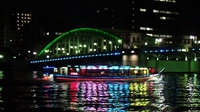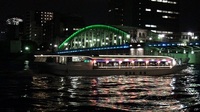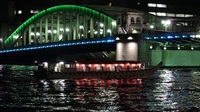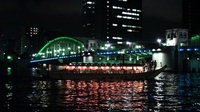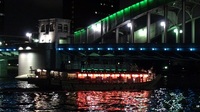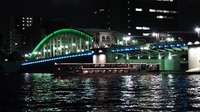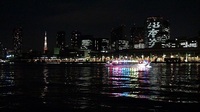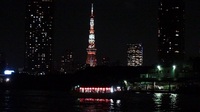On July 28, the Sumida River Fireworks Festival, which colors the midsummer night sky in Tokyo, was held.
This year, a way of viewing from the Sky Tree's "Tenbo Deck" has been added.
From the grandstand, from the window of the restaurant, from the rooftop of the building, from the houseboat on the river surface.
From the chartered helicopter, you can also enjoy placing a sheet on a regulated road.
This year there was a place I would like to see.
"I want to see the fireworks from the top of Ryogoku Bridge."
It is said that the fireworks festival of the Sumida River began with fireworks at the opening of rivers in both countries during the period of Yoshimune Tokugawa, praying for the memorial service of great famine and plague.
Ryogokubashi is filled with spectators with the shouts of "Keyya" and "Tamaya".
How does the liveliness drawn in many ukiyo-e prints look in the modern era of Heisei?
I walked from Ryogoku Station on the JR Sobu Line.
The street in front of Kokugikan is also subject to traffic restrictions, so I was able to use the fan while looking up at the sky with peace of mind.
On the Ryogoku Bridge, one-way traffic and stop are prohibited.
The sound of the fireworks echoes.
Upstream of the river, the smoke after launch is free, and the smell of explosives is transmitted.
It is a moment when expectations and mood are excited.
I saw it.
More than I expected, the overlapping colors, the spherical shape and the flow of spherical light seemed larger.
The Sky Tree shows its presence while changing the color as it collaborates with fireworks.
A houseboat decorated with lanterns, as if it came out of Ukiyo-e, is a first-class excursion that transcends the times.
Although it is prohibited to stop, the foot of the person pointing the mobile phone stops in the moment of competing fireworks.
The voices of traffic coordinators and police officers will also increase.
The liquor-burned Ochan wanted to communicate with the guidance person.
Don't say "I'm smart."
In cities, there is a unique way of enjoying themselves.
Ryogoku Bridge, which connects both Chuo-ku and Sumida-ku.
During the Edo period, it was a key point for land transportation that connects Musashi and Shimousa.
It is said that Hirokoji in Hashizume was one of Edo's leading downtown areas.
The fact that Ryogoku Bridge was built on the Okawa River (Sumida River), the cornerstone of defense surrounding Edo Castle, was a symbolic thing that Tokugawa shogunate entered a stable period and turned into Bunji politics.
My push for Ryogoku Bridge is that the iron bridge on the Sobu Line emerges in a semicircular shape under the light of flower fire.
In the scene where the train passes, you want to release the shutter even if it is not a "shoot iron".
Walk through the valley of the building toward the launch venue.
The corners of the building cut off fireworks at sharp angles.
The sound of the fireworks echoing in the building created a lingering sound unique to the city.
![]() It's watermelon.
It's watermelon.![]()
![]() Soap
Soap![]()
![]()
![]() ), you can create such a work of art.
), you can create such a work of art.![]()
![]()
![]()






